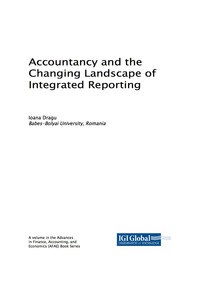Cozy Corporation manufactures precision equipment made to order for the semiconductor industry. Cozy uses two manufacturing overhead cost pools?one for the overhead costs incurred in its highly automated Machining Department and another for overhead costs incurred in its?labour-based Assembly Department. Cozy uses a normal costing system. It allocates Machining Department overhead costs to jobs based on actual?machine-hours using a budgeted?machine-hour overhead rate. It allocates Assembly Department overhead costs to jobs based on actual direct manufacturing?labour-hours using a budgeted direct manufacturing?labour-hour rate. The following data are for the year 2019
Cozy Corporation manufactures precision equipment made to order for the semiconductor industry. Cozy uses two manufacturing overhead cost poolsone for the warhead costs incuned in its highly automated Machining Department and another for overhead costs incurred in its labourbased Assembly Department. Cozy uses a normal costing system. It alocates Machining Department overhead costs tojobs based on actual machine-hours using a budgeted machine-hour overhead rate. It allocates Assembly Department overhead costs tojobs based on actual direct manufacturing labourhauls using a budgeted direct manufacturing labour-hour rate. The following data are for the year 2019: a {Click the icon to view the data.) muired Requirement 1. Compute the budgeted overhead rates for the year in the Machining and Assembly Depanments. (Round your answers to the nearest whole dollar.) The budgeted overhead rate forthe year in the Machining Department is $ The budgeted overhead rate forthe year in the Amembly Department a: S Requirement 2. Compute the under or overallocated overhead in each department forthe year. Dispose of the under or overallooated amount in each department using in. immediate write-off to Cost of Goods Sold; b. proratlon based on ending balances (before proration) in Cost of Goods Sold, Finished Goods, and Work-in-Process', and c. proration based on the allocated overhead amount {before proration] in the ending balances ol Cost of Goods Sold, Finished Goods, and WorkinProcess. We wiI begin with as. immediate miteoff to Cost of Goods Sold. The first step is to find the over- or underallocated amounts for each department. Begin by selecting the formula and then enter the amounts for the Machining Department. (Indicate an overallocated amount using a minus sign.) Actual manufacturing overhead Manufacturing overhead allocated costs Over- or underallocation Using the formula you determined above, compute the overallocated/underallocated amount for the Assembly Department.Now dispose of this amount using a writeoff to Cost of Goods Sold for the Machining Department. Show the account balances after the write-oft. (Use a minus sign or parentheses for any subtracticns. Enter a '0' for any zero adjustments or balances.) Account Balance Account Balance Before Proraon 1- Adjustment = Afher Proration Cost of Goods Sold $ 21,300.000 + = Finished Goods Control 2,400.000 + = Womin-Pmess Control 7,300,000 + = b. Compute the under or overdlocated overhead in each department for the year. Dispose of the under or overalocated amount in each department using proration based on ending balances b. Compute the under- or overallocated overhead in each department for the year. Dispose of the under- or overallocated amount in each department using proration based on ending balances (before proration) in Cost of Goods Sold, Finished Goods, and Work-in-Process. (When calculating the prorations, round the interim proration ratio to eight decimal places. Round your final answers to the nearest whole number. Use a minus sign or parentheses for any subtractions.) Proration of Proration of Underacllocation or Underacllocation or Overallocation Overallocation Account Overhead Machining Overhead Assembly Account Balance Balance Dept. Dept. After Proration WIP 7,800,000 FG 2,400,000FG 2,400.000 cues 21,300.000 Total 0. Compute the under or overallooated overhead in each department for the year. Dispose of the under or overallooated amount in each department using proration based on the allooated overhead amount (before proration) in the ending balances of Cost of Goods Sold, Finished Goods, and WorkinProoess. Start with the Machining Department. (Round the proportion to eight decimal places. Round all other amounts to the nearest whole number.) Total Amount of Proration of Start with the Machining Department. (Round the proportion to eight decimal places. Round all other amounts to the nearest whole number.) Total Amount of Proration of Overallocated or Underacllocation or Underallocated Overallocation Overhead X Proportion Overhead WIP X FG X COGSCOGS X Total Now complete for the Assembly Department. (Round the proportion to eight decimal places. Round all other amounts to the nearest whole number.) Total Amount of Proration of Overallocated or Underacllocation or Underallocated Overallocation Overhead x Proportion Overhead WIP XFG X COGS Total Requirement 3. Which method do you prefer in requirement 2? Explain. Alternative is theoretically preferred over This alternative yields the same ending balances in Work-in-Process, Finished Goods, and Cost of Goods Sold that would have been reported














